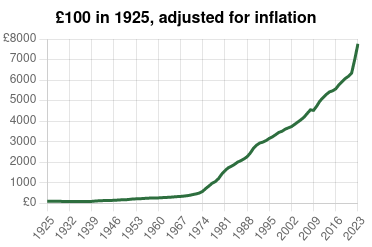Before we roll up our sleeves and dig into the serious business of food pricing, we need a way of converting LSD to pounds to two decimal places, among other things. Here is an inline WordPress calculator courtesy of the Calculated Fields wonder plugin. My first idea was to provide a digital scratchpad with which to convert one-off figures.
[CP_CALCULATED_FIELDS id=”7″]
As part of the process, I also wrote a spreadsheet to do more heavy lifting, which is now available to logged-in users using the download link in the housekeeping menu box.
However, we need to do more than calculate the face value of old prices, we also need to translate the value of the currency of the day. The problems arising from trying to apply a one-dimensional measurement to a multidimensional world range from the practical to the arcane and I quite understand that not everyone will be keen to engage with them. One of the first is to decide which parameters are relevant and whether any of them are of universal application, regardless of whether or not such parameters are measurable.
What the official data looks like

Ian Watson, who developed the website Official Data [dot] org, has assembled government data from western economies in a bid to quantify the huge losses in their currencies’ historic spending power from the 1970s on. Working from national government data, Watson plots the value of 100 pounds from 1925 to the present day and found the 1925 hundred pounds to be worth around 7,700 pounds in today’s money. He found a similar pattern in the US, Australian and other major industrial economies. The graph for the UK is dramatic: clicking it will take you to the relevant page on Watson’s website.
